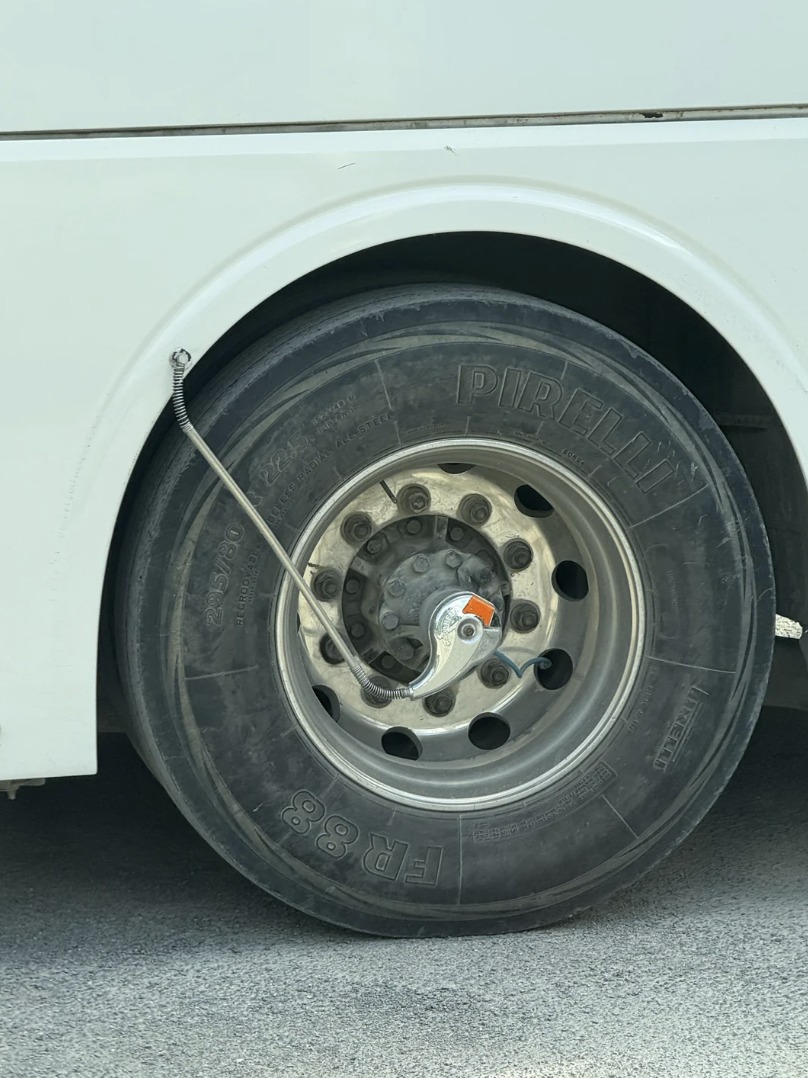While stopping at a rest area off I-40 and sipping on some less-than-stellar gas station coffee, I happened to spot a large tour bus parked outside. I didn’t think much of it at first, but then I noticed something odd: a thin little tube sticking out from one of the bus’s wheels. Curious, I approached the driver, who was taking a smoke break nearby, and asked him about it.

He explained that it wasn’t some kind of anti-theft device as I had assumed—it was part of a Central Tire Inflation System, or CTIS. I’d never really given much thought to tire pressure outside of the occasional dashboard alert, but that conversation sparked my curiosity. I started researching the technology and found out that this understated system has quietly been improving vehicle safety and performance for decades, particularly in the military and commercial transportation sectors. So, what exactly is CTIS? The Central Tire Inflation System allows drivers to monitor and adjust tire pressure without ever stepping out of the vehicle. A CTIS uses a series of swiveling fittings and small hoses—those little dangling cables you might have seen on truck wheels—and is powered by an onboard air compressor that can either inflate or deflate tires as needed.
The beauty of CTIS lies in its adaptability. Whether a vehicle is hauling a heavy load, traversing rocky terrain, or navigating through drastic temperature changes, CTIS can automatically adjust tire pressure to match the current conditions. No need to stop, guess, or pull out a pump. Originally developed during World War II, CTIS was a military solution for keeping vehicles mobile in unpredictable and often hostile environments. In those early days, the systems were bulky and had to be operated manually, but the principle remained invaluable. By the 1980s, the U.S. military began implementing more advanced CTIS setups in vehicles like the Humvee.
A key innovation came in the form of rotary unions, which allowed air to be circulated through spinning wheels without breaking the connection. This breakthrough eventually paved the way for commercial use. By the 1990s, industries like logging, agriculture, and mining began equipping their vehicles with CTIS to help them cope with changing ground conditions and reduce tire-related downtime. From there, the system started to appear on buses and over-the-road trucks, where it offered benefits not just in safety, but in efficiency. So why does CTIS matter? It plays a major role in improving traction, especially on soft or uneven terrain, by lowering tire pressure when needed. On paved roads, higher pressure ensures optimal performance.
The system also extends the life of tires by maintaining ideal inflation, reducing uneven wear and the chances of damage. Safety improves too—proper tire pressure minimizes the risk of blowouts and loss of control, especially under heavy loads. Fuel efficiency gets a boost, as well, since properly inflated tires reduce rolling resistance. Perhaps one of the most important advantages is uptime: vehicles equipped with CTIS can stay on the road longer, avoiding costly delays or breakdowns. Visually, the system is pretty simple. The most noticeable feature is the small hose or cable running into each wheel hub. These connect to rotary unions that let air pass through without causing damage from wheel rotation. Some systems also include a pressure indicator that turns red and protrudes if the pressure falls below a safe level. Once you know what to look for, you’ll begin spotting these little cables on everything from dump trucks to public buses. Given all the benefits, you might wonder why every vehicle doesn’t come with CTIS. The answer mostly boils down to cost and complexity. CTIS adds a level of engineering that’s not necessary for everyday passenger vehicles. It makes the most sense in scenarios where terrain changes often or where vehicle downtime can be costly—like in military operations, farming, off-roading, or freight hauling. That said, some premium off-road vehicles are beginning to feature CTIS as well. Reflecting on that chance sighting of a small cable on a bus tire, I never imagined it would lead me down such a fascinating rabbit hole. Central Tire Inflation Systems are one of those behind-the-scenes technologies that quietly enhance safety, cut costs, and keep entire fleets rolling smoothly. So, the next time you’re driving alongside a bus or a semi-truck, take a moment to glance at the wheels. If you see a thin hose attached to the hub, you’ll know CTIS is doing its job—silently and effectively, one perfectly balanced tire at a time.





